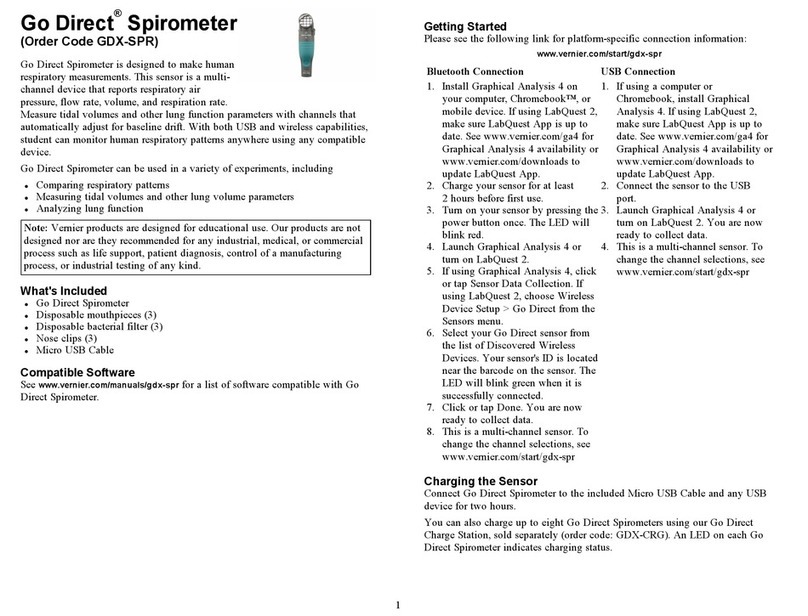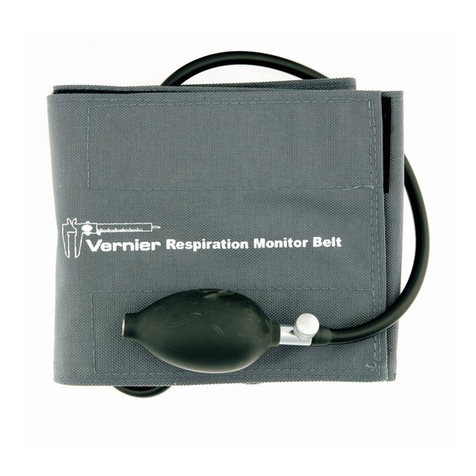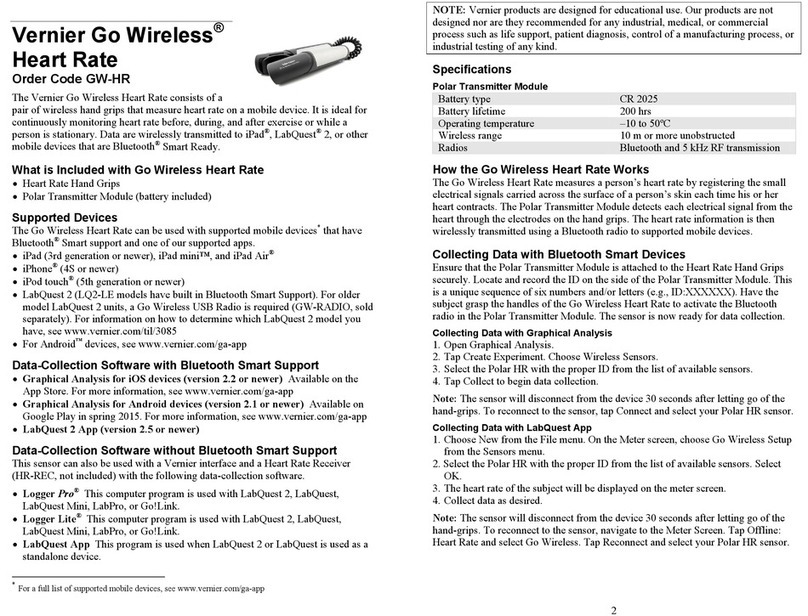4
Battery recycling information is available at www.call2recycle.org
Do not puncture or expose the battery to excessive heat or flame.
The symbol, shown here, indicates that this product must not be disposed of
in a standard waste container.
Vernier Software & Technology
13979 SW Millikan Way • Beaverton, OR 97005-2886
Toll Free (888) 837-6437 • (503) 277-2299 • Fax (503) 277-2440
info@vernier.com • www.vernier.com
Rev. 10/23/18
Logger Pro, Logger Lite, Vernier LabQuest, Vernier LabQuest Mini, and other marks shown are our trademarks
or registered trademarks in the United States.
All other marks not owned by us that appear herein are the property of their respective owners, who may or may
not be affiliated with, connected to, or sponsored by us.
How the Spirometer Works
In the center of the Flow Head is a mesh screen. As air is forced through the
Flow Head a slight difference in pressure occurs between the front and the back
of the screen. A tube in front of the screen and a tube behind the screen pass the
pressures to a differential pressure transducer. The greater the airflow passing
through the screen, the greater the pressure differential. Airflow rate (L/s). is
measured directly. Volume (L) is calculated by integrating the flow rate (L/s) as
a function of time (s).
Troubleshooting
For troubleshooting and FAQs, see www.vernier.com/til/1409
Repair Information
If you have watched the related product video(s), followed the troubleshooting
steps, and are still having trouble with your Spirometer, contact Vernier
Technical Support at support@vernier.com or call 888-837-6437. Support
specialists will work with you to determine if the unit needs to be sent in for
repair. At that time, a Return Merchandise Authorization (RMA) number will be
issued and instructions will be communicated on how to return the unit for
repair.
Accessories/Replacements
Item Order Code
Disposable Bacterial Filter (pkg. of 10) SPR-FIL
Disposable Mouthpiece (pkg. of 30) SPR-MP
Noseclip (pkg. of 10) SPR-NOSE
Spirometer Flow Head SPR-FLOW
Warranty
Vernier warrants this product to be free from defects in materials and
workmanship for a period of five years from the date of shipment to the
customer. The replaceable Flow Head, manufactured by BIOPAC Systems, Inc.,
carries a 12 month warranty and is not subject to a separate warranty by Vernier.
This warranty does not cover damage to the product caused by abuse or
improper use. This warranty covers educational institutions only.
Disposal
When disposing of this electronic product, do not treat it as household waste. Its
disposal is subject to regulations that vary by country and region. This item
should be given to an applicable collection point for the recycling of electrical
and electronic equipment. By ensuring that this product is disposed of correctly,
you help prevent potential negative consequences on human health or on the
environment. The recycling of materials will help to conserve natural resources.
For more detailed information about recycling this product, contact your local
city office or your disposal service.
























